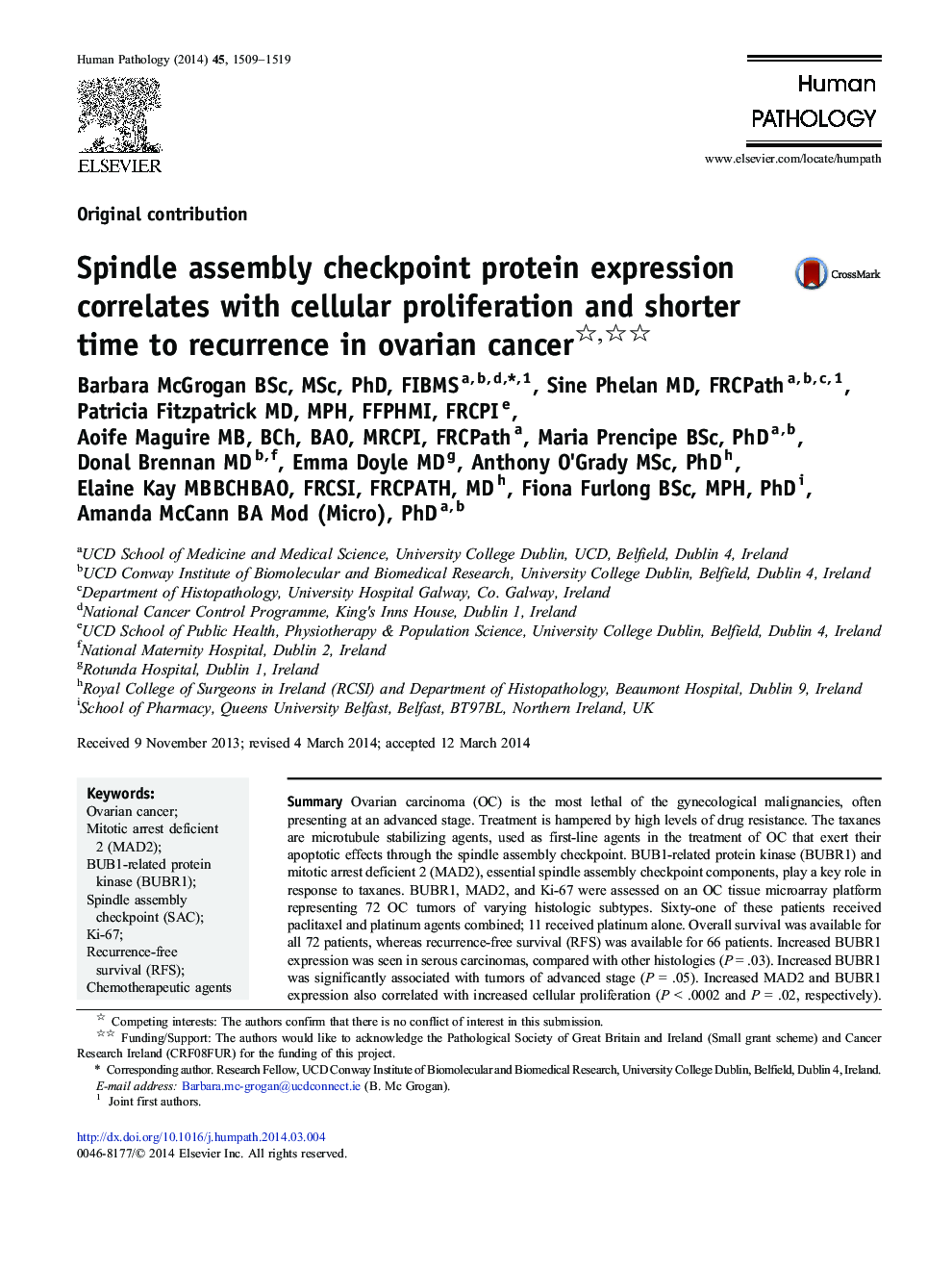| Article ID | Journal | Published Year | Pages | File Type |
|---|---|---|---|---|
| 4132815 | Human Pathology | 2014 | 11 Pages |
SummaryOvarian carcinoma (OC) is the most lethal of the gynecological malignancies, often presenting at an advanced stage. Treatment is hampered by high levels of drug resistance. The taxanes are microtubule stabilizing agents, used as first-line agents in the treatment of OC that exert their apoptotic effects through the spindle assembly checkpoint. BUB1-related protein kinase (BUBR1) and mitotic arrest deficient 2 (MAD2), essential spindle assembly checkpoint components, play a key role in response to taxanes. BUBR1, MAD2, and Ki-67 were assessed on an OC tissue microarray platform representing 72 OC tumors of varying histologic subtypes. Sixty-one of these patients received paclitaxel and platinum agents combined; 11 received platinum alone. Overall survival was available for all 72 patients, whereas recurrence-free survival (RFS) was available for 66 patients. Increased BUBR1 expression was seen in serous carcinomas, compared with other histologies (P = .03). Increased BUBR1 was significantly associated with tumors of advanced stage (P = .05). Increased MAD2 and BUBR1 expression also correlated with increased cellular proliferation (P < .0002 and P = .02, respectively). Reduced MAD2 nuclear intensity was associated with a shorter RFS (P = .03), in ovarian tumors of differing histologic subtype (n = 66). In this subgroup, for those women who received paclitaxel and platinum agents combined (n = 57), reduced MAD2 intensity also identified women with a shorter RFS (P < .007). For the entire cohort of patients, irrespective of histologic subtype or treatment, MAD2 nuclear intensity retained independent significance in a multivariate model, with tumors showing reduced nuclear MAD2 intensity identifying patients with a poorer RFS (P = .05).
